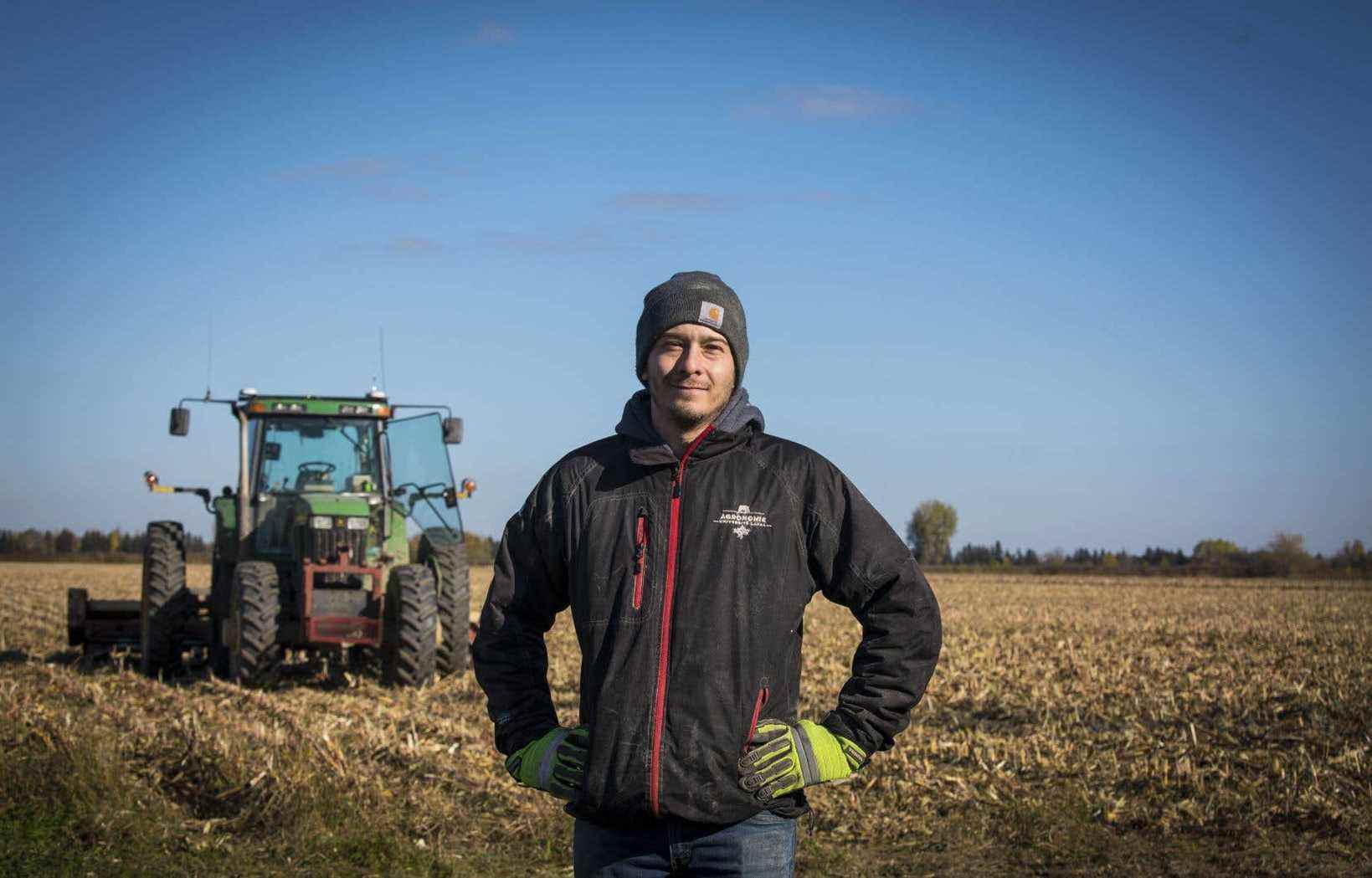Quebec’s agricultural land has increased by nearly 14 km2 over the past twelve years, or 1388 hectares. But in the greater Montreal area, pressure from real estate investors and the need for municipalities to increase their property income have reduced the size of green zones. However, it is the region that hosts the most fertile land in Quebec.
“My grandfather always said that, despite all the technological advances, we owe our existence to eight inches of arable land and the rain,” says Matthew Dewavrin, grain producer in Vaudreuil-Soulanges. No one seems to realize how fragile it is except us. “
It is in the Montérégie and the Laurentians that the area of agricultural land has decreased the most since 2009. But all the regions where at least part of the territory is included in the Metropolitan Community of Montreal (CMM) have seen the area of their land. so-called “green” areas decrease.
From the age of 13, Matthew Dewavrin plowed, sowed and harvested grain on family land. In the spring of 2020, he bought Les ferme Longprés, at Les Cèdres, from his parents with his brother and cousin.
“It’s a land that you can’t find anywhere else,” he says behind the wheel of his tractor. We have invested a lot to convert it to organic. “
He fears that the industrial development of his region will force him to sell part of his land in the coming years and deplores the lack of transparency of local authorities regarding future projects. “This is the number one threat to our business. “
A wealth
The CMM wants to increase the number of cultivated land by 6% by 2031 without making any zoning change, in particular through the re-cultivation of fallow land. Proof that data on agricultural land is incomplete: a green area does not necessarily mean that the land is cultivated there. Retired geography professor at UQAM Bernard Vachon stresses that half of the surface of the permanent agricultural zone is not allocated to agriculture.
Geography professor Claude Marois, a specialist in the consequences of urban sprawl, also recalls that infrastructures, such as roads, bridges, railways and even parks, are often incorrectly counted in agricultural territory.
This so-called “green” zone nevertheless reflects the importance of the agricultural sector in the regions of Quebec. And it is, among other things, the quality of the soil that dictates what can be cultivated there.
The repeated floods of the river, for thousands of years, have made the St. Lawrence plain the most fertile region in Quebec, explains Marcel Groleau, president of the Union des producteurs agricoles (UPA). These lands constitute invaluable wealth, according to the farmer. “When we build a shopping center and a parking lot on our farmland, we lose them forever,” he denounces.
Development and demand
Urban sprawl is particularly fierce around Montreal. This is why the CMM adopted in 2011 a land use planning and development plan which includes provisions “very, very rigorous” in terms of zoning and densification of spaces, according to Bernard Vachon. The organization is thus trying to protect its agricultural land by forcing the optimization of “white” land, therefore zoned residential, commercial or industrial, already available.
Les Cèdres, where Fermes Longprés is located, is one of the municipalities that is part of it. This is the reason why Matthew Dewavrin should not be afraid of losing his land over the coming decades, believes Carole Cardinal, director of territorial development and industrial commissioner at Développement Vaudreuil-Soulanges.
“Our development necessarily takes place in white areas; we must maximize their use before even thinking about converting green areas, she explains. This is why the suburbs are transforming, there is densification. “
Vaudreuil-Soulanges has experienced very large population growth in recent years, over 75% since 2001. And this growth is likely to continue, according to the Institut de la statistique du Québec, which estimates it at around 16, 1% in the next twenty years.
Moreover, it is its strategic position, as the “gateway to the Ontario-Quebec trade corridor”, at the intersection of highways 20, 30 and 40, which has made the region a target for the Couillard government to welcome a logistics center in its Bill n ° 85, in 2015.
“It’s their pension fund”
This type of project is normally very well received by municipalities, explains Bernard Vachon, because they are vulnerable to pressure from the environment, especially since they need income from property taxes. “Several elected municipal officials consider that agricultural land is a brake on the development they need to provide a variety of services to their population. “
According to Claude Marois, this desire of municipalities to develop leads to a feeling of insecurity among the farmers who are on the fringes of these new projects.
“They say to themselves: ‘development is at my doorstep, I don’t have many chances of survival’. Often, stress forces them to sell because their farm is their pension fund. And we can’t blame them because we don’t do much to secure them. “
The price of farmland has also jumped since the turn of the century. One of the trends that Marcel Groleau notices is the purchase of land in the green zone by developers or real estate investors who “are sitting on a small gold mine and who are simply waiting for the value of their land to increase. “.
The president of the UPA deplores the speculative value of these lands, “completely disconnected from the agricultural reality”. The exorbitant prices also make it very difficult to pass on land to subsequent generations, according to him.
